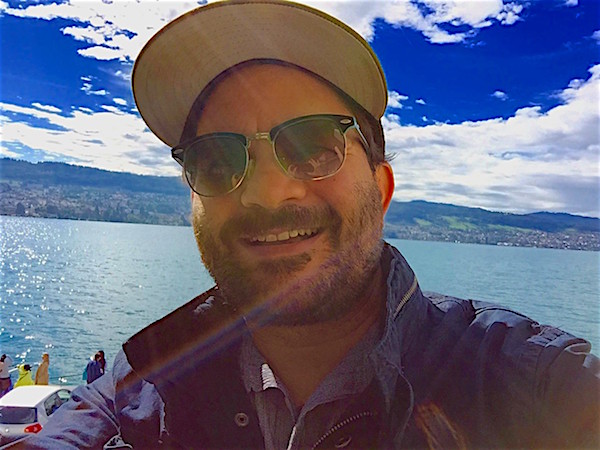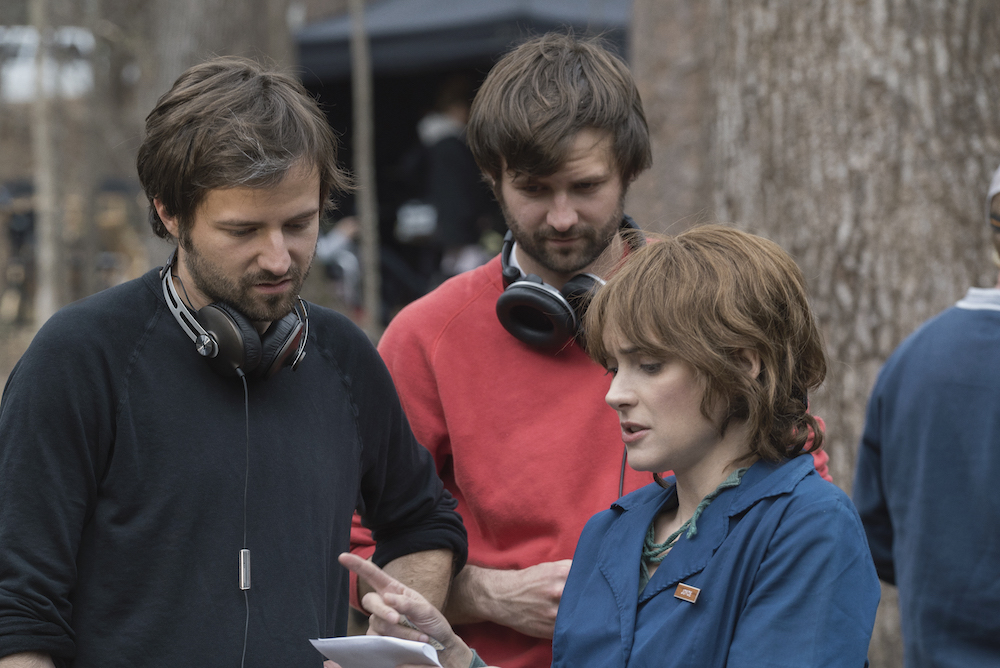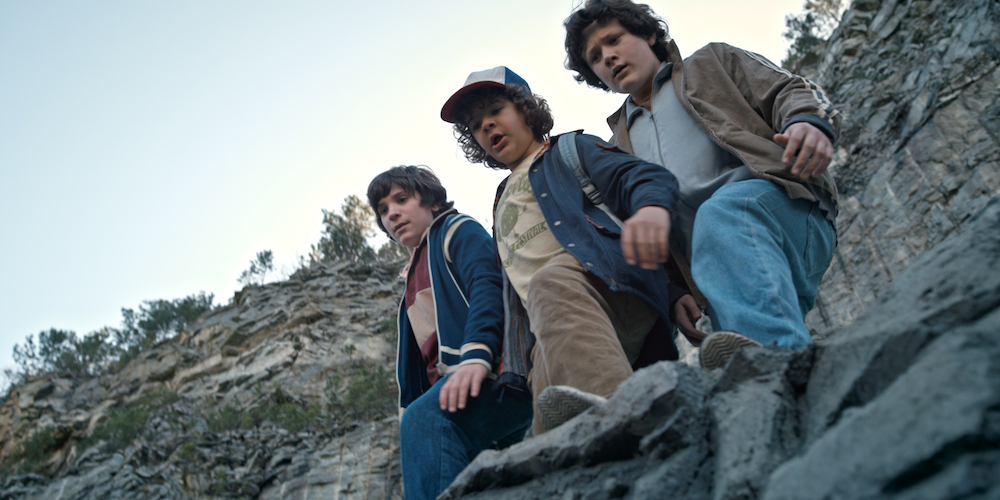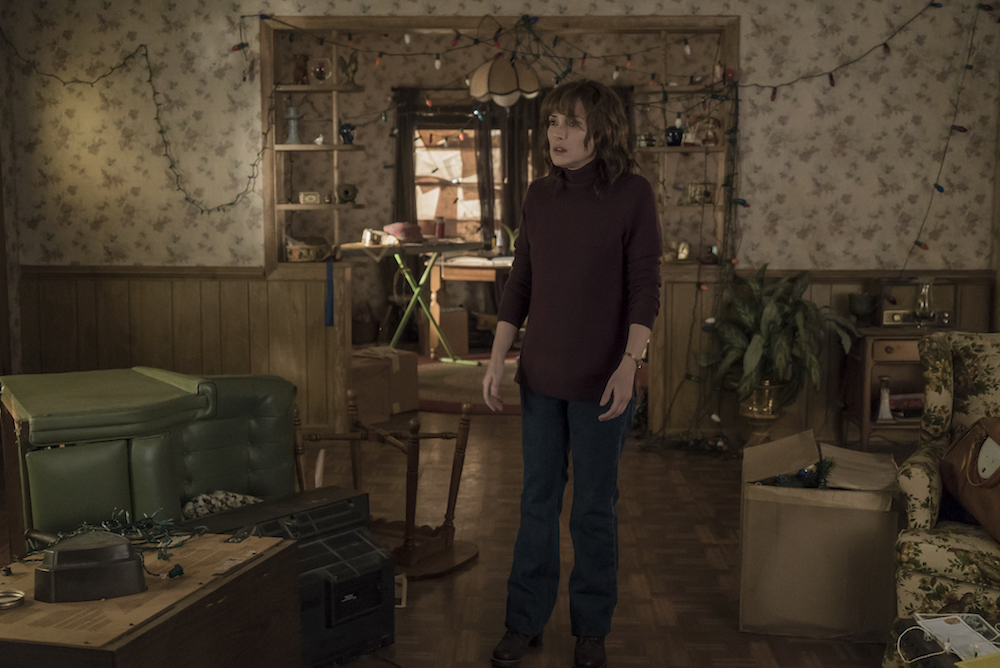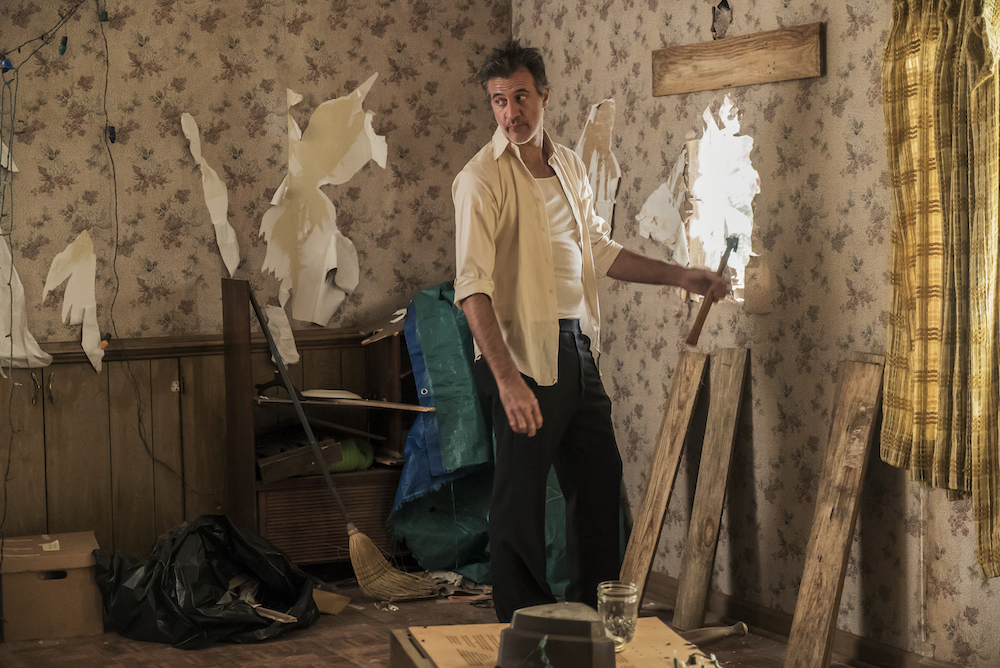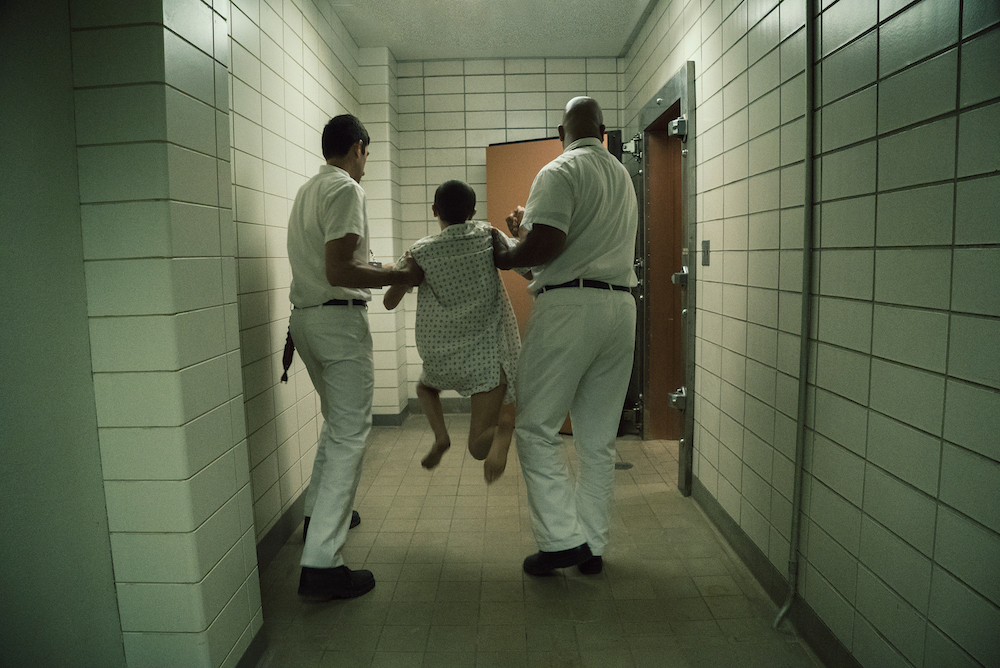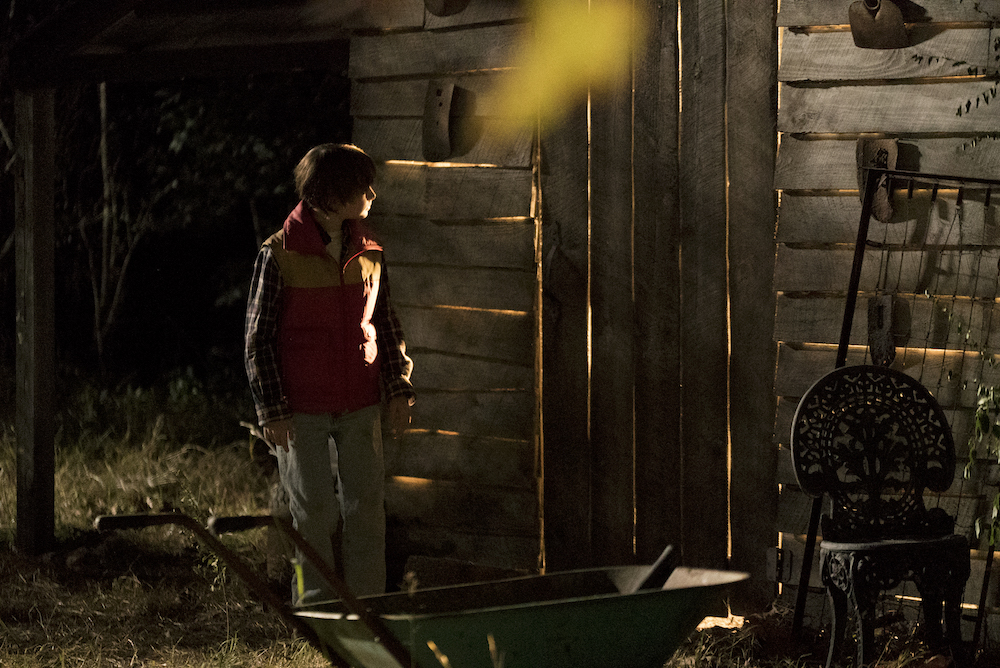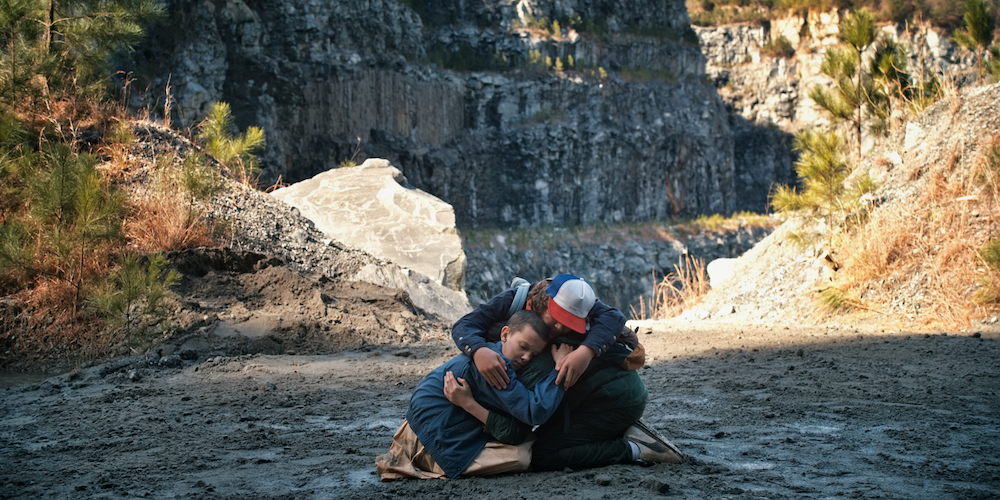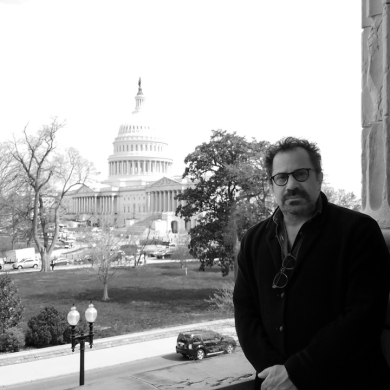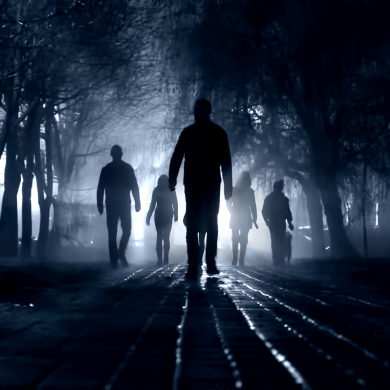Published Date: 02-15-17
By: Gregg LaGambina
Third in the series.
This year, Georgia is set to surpass New York as the state with the second most film and television shows currently in production. The Peach State, of course, still has to catch up to California – that’s where Hollywood is, after all – but with the way things are going, that’s no longer out of the realm of possibility. In 2015 alone, film and television productions in Georgia generated $7 billion in revenue that went directly into local economies and employed tens of thousands of skilled workers with high-paying jobs and benefits.
What is the cause of this sudden flurry of dollars? Most will tell you it’s all about the tax incentives. In 2008, the state government passed two bills – the Georgia Entertainment Industry Investment Act and the Sales and Use Tax exemption – the latter of which offers refunds as high as 30 percent if a production meets certain requirements, such as hiring local workers, or renting supplies from nearby businesses.
One of the direct beneficiaries of this revitalized local economy is Tony Holley. As a member of Fake Wood Wallpaper – an independent production services company located in Atlanta – Holley has recently worked with Ang Lee on Billy Lynn’s Long Halftime Walk and is currently wrapping the highly anticipated second season of Netflix’s cult phenomenon Stranger Things. Holley is a filmmaker in his own right, but the foundation of his business is his longtime expertise in scouting and managing locations.
Holley is also an activist. His job as a location manager occasionally overlaps with his support of Places in Peril – the Georgia Trust’s program to identify historic sites threatened by demolition and to encourage the preservation of significant buildings and landscapes. If he can save an historic building by using it in a show, he will find a way to restore the location, stay within budget, and broker a deal with the local legislature to save the structure from demolition. In other words, he’s not just a location scout and a location manager; he’s also helping to rehabilitate locations for future projects in the state.
CreativeFuture spoke with Holley to find out more about his work on Netflix’s Stranger Things, how well the Georgia Film Economy is doing, and what, exactly, a location manager does before, during, and after a production.
Gregg LaGambina: How did you become a location manager?
Tony Holley: The first paying gig that I got in film was in the location department. That was in 2003. I was good at it and it fit the career path I wanted to follow. So, I stuck with it, even though at the same time I was also an assistant director. I was doing both jobs simultaneously. But, at some point, I had to make a choice.
GL: What type of work were you doing before that first project?
TH: Well, I had retired [laughs] from my corporate job. I was a ratings analyst for an insurance company. I had left that job about a year prior to getting this job, because while I was doing that, I was doing general indie-film stuff that most people do until they get into the “business” – just making films and shorts with your friends on the weekend. I had been doing that since 1997 or so. That got the attention of a local ad agency that offered me a job producing a series of infomercials for this pharmaceutical firm out of New Jersey.
GL: What’s the difference between a location scout and a location manager?
TH: A scout simply looks for stuff, basically. I don’t want that to sound like a pejorative, because scouting is extremely difficult. Most people get into this department because it seems like this really cool aspect of the process. And it is. But it’s really hard to be good at it. And there are very few scouts in this town, or really any town, I think. But it’s not glamorous and it isn’t as easy as it might seem. It’s not just driving around in your car and going, “Oh, that looks cool. I’m going to go knock on their door!” It’s more difficult. The location manager takes what’s been scouted, and then handles all the permits, logistics, and operations management – acting as a liaison between the producers and the home or business owner.
GL: How do you decide where to scout for locations? Do you work with the filmmaking team (producer and director) to get input about what they are looking for and what they want the feel of the film to be?
TH: Ideally, you’ll have the script. The super-secretive, big-budget tent-pole movies often won’t give you a script because they don’t want it to get out into the world. But, let’s just put that aside for a second. So, you have the script and you’ve probably broken it down into, essentially, “What is this location going to be? Are there interiors and exteriors? How many pages is it?” The number of pages is important so you can get a sense of how many days you need to be at a certain location. Once you’ve got that breakdown, you talk to the production designer. My closest working relationship is with the designer. We’re on the ground well in advance of the director, usually. So, we begin identifying, selecting, and combing through locations so that the director can see exactly what we think fits the project.
Some designers will prepare full look-books that have colors, tone, mood, and even materials that they want to use, which will become part of my job. For example, they might say, “This park has to have a hill on it and there has to be a pond at the bottom.” It’s that kind of thing. I get that direction, usually from the designer. Beyond that, I’ve lived in Georgia my whole life, so I know where to find the best hill with a pond at the bottom.
GL: Does living in Georgia make you a better location manager?
TH: I think it helps. There are a number of shows that will bring in a location manager from out of town. Certainly on the big shows, the manager is almost always brought in from L.A. From the scout perspective, it definitely helps if you have some knowledge of where you are. But, it’s not a prerequisite.
GL: How do you decide what needs to be a practical location or a set build? Does budget determine whether or not you look for practical locations? What’s the difference between the two?
TH: The main difference is the stuff on stage is a lot easier on me. On a soundstage, I have much more control over the environment. On location, we’re out in the world where anything can happen, so there is a lot more preparation involved – from securing the location, to making sure we have everything we need that day to shoot without interruption. A lot of the unpredictable risks are reduced when you’re in a controlled environment, like a set-build or a stage.
Any number of factors can dictate whether something ends up on stage. How long are you going to be there? – that’s a primary factor. If it’s a feature, it needs to be a fairly dominant location to justify building it because the upfront costs to build a set can be excessive – construction, labor, paint, and materials. It all adds up. Plus, there are some places where it doesn’t make sense because, for example, you can’t just shoot at the State Capitol for four days. The Georgia State Capitol has to be open for business every day and you can’t just put an entire film crew in there without closing down at least part of the building. You might be able to shoot after hours or in part of the Capitol for a short period of time, but you can’t just shut down an entire building like that for too long. It’s not possible, if for nothing else than it’s prohibitively expensive to do so. So, if you want the State Capitol for more than a few days, you may have to build it. That comes into play between TV and film, because TV has a lot of recurring sets that they go back to over and over again, so every show’s primary location is almost always going to be a set-build of some kind.
GL: How do you go about securing a location once you’ve decided it’s perfect for what you need? What things need to be done before a crew sets up in a residential neighborhood, or in a person’s house?
TH: First, if you’re using someone’s house you have to sign a contract with the homeowner called a location agreement. Basically, the agreement says that anything filmed there is owned by the production, when we’ll be in and when we’ll be out, how much the homeowner will be paid, and that they won’t be liable if someone gets hurt – things like that. Additionally, we will usually enter into agreement with the Home Owners’ Association and offer them a donation. Most municipalities have some form of filming permit we must apply for, as well. Beyond those allowances, the job becomes managing all the logistics involved with filming.
GL: Once Stranger Things commits to filming in Georgia and the locations have been picked, what’s next for you? Your job doesn’t end once the show starts filming, right?
TH: No, it doesn’t. You keep shooting, so there’s always another location – or locations – to find. When we’re in a neighborhood, we have to be on good terms with the neighbors. We have to find a place for all the trucks and crew to park, a place for us to eat, and restrooms too. Finding all of that is on me. Climate control is also on me – we don’t use house A/C; we bring in our own. I sometimes have to hire landscaping services. Sometimes I hire pool guys to drain a pool. I hire cleaning companies. I hire cops. I hire private security to watch the set overnight. That’s all part of my job.
GL: For the most part, do you hire local professionals from Georgia?
TH: Not everybody does, but I do. There are plenty of companies that have come to Georgia from L.A. and some of them are good people, but I like to hire locals.
GL: A lot of Stranger Things takes place inside the home of Joyce Byers (Winona Ryder). So much is happening inside that house – and in between its walls and through the wires – but when we see it from the exterior, it’s a tiny, desolate place. Was this an existing location, or did you build it from scratch?
TH: We found the house, but we built the interior. Some people may not pick up on it, but the inside is a hell of a lot bigger than the actual house. But that’s typical – to build over scale so you can actually move around with the equipment. We built all of the interiors for our houses on stage, with limited exception. The Byers’ house – that’s all on stage.
GL: What are some of the advantages to using a stage and building sets versus filming on location? For example, there’s that memorable scene where Joyce Byers takes a sledgehammer to her living room wall and then stares desperately out into her yard. Did you do that to the actual house?
TH: Using a stage gives us a greater amount of control. We can go in and out of the sets when they’re on stage. The practical locations we used were for the exteriors. They were actually on location. Sometimes, you have to do both. For example, at Joyce Byer’s house, we built the shed on location where Will Byers is kidnapped. When you see the shed from the outside, that’s the one we built on the actual property. However, the scenes inside the shed, that’s all on stage. So, we had to build two sheds. You couldn’t do an exterior location shot of the Byers house and not have that shed on the property, but the interior is not actually filmed in the shed on location, it’s inside the second one we built on stage. As for the hole in the wall, we trashed the actual house on stage. So when there’s a shot from inside the house and you see the hole in the wall – that’s the stage; but when you see the hole in the wall from the outside – that’s the actual house with a green screen where the hole would be. There’s no way that I was going to approach a homeowner and say, “We’re just going to cut a hole in your house!” We looked at maybe ten to twelve houses before we found the one we used – and we did not actually make a hole in their wall.
GL: Everyone’s house on Stranger Things seems to be an extension of their characters. There’s the popular jock – his house with the pool is exactly the type of house you would expect his parent’s would have. It’s always those kids with the cool houses and absent parents who throw the best parties.
TH: [Laughs] That’s the Harrington’s house. I thought that the one we found looked just right for a well-to-do family in a small suburban town. The Harrington house is big, but it’s not massive. That house is perfect. It’s period-appropriate, too.
GL: The secret government-run lab where Dr. Martin Brenner (Matthew Modine) is up to, well, whatever he is up to – what’s the significance of that building? Was that built for the show, or is it a real place?
TH: That’s a real place. Every movie in town shoots at it. It’s great. It’s really bombastic and brutalist. It’s an old psychiatric hospital that a local university – Emory University – owns. They had been clearing it out for years. In the last three years, it’s essentially become a revolving door for film companies, especially the ones that want dark content, because it’s, well, an old psychiatric hospital! Or, they want it for the period, because it’s very period appropriate for the ’60s, ’70s, and ’80s. It’s perfect. It’s a gorgeous building. The power’s on, but there’s no air conditioning, so it’s miserable sometimes, but it’s a cool building nonetheless.
GL: What particular challenges did you face while working on Stranger Things? Were there places you wanted to use but couldn’t?
TH: It was more about a place we wanted to use and could. It wasn’t used enough in the show, and ultimately I don’t care, because of what we did to it. The library, where [Police Chief] Hopper does his research and starts to figure out what’s going on – that’s actually a former library near the stage [Screen Gems Studios]. It’s in a series of buildings – old municipal buildings that had fallen into disrepair. They had been on Georgia’s “Places in Peril,” which is sort of a watch list for these places that could disappear. They’re historically significant, but they’re not on the official registry that protects significant buildings, so they’re in danger.
So, this library had been on the Places in Peril list because there was a lot of mold in there. It’s at the bottom of a hill, so the basement was submerged, with no run offs, the water was always getting in, and there was mold everywhere. There was lead paint too, inside and out, which was peeling everywhere and very hazardous. There were asbestos tiles all throughout the building too. Those are big red flags in this industry that’s gotten increasingly more conscious about protecting the safety of the cast and crew.
GL: How did you get permission to film there?
TH: When the state became more film-friendly, shows would come to East Point – the city where Stranger Things was partially filmed – and they would always take a look at that building because it’s nearby. So we looked at it for Stranger Things. I brought in a company to give us an estimate and it was about $30,000 to get it safe enough to film in there. The city used to say, “We’d love to have you shoot here, but that $30,000 is on you.” Then, every production would usually walk away. But, I wasn’t willing to take “no” for an answer. I basically did the math on what it would take to make it worth our while to spend that kind of money. How many days would I need to prep and shoot there and what should that cost me? So, I negotiated with the city and said, “We’ll do this and I’ll foot most of the bill, but it’s your property and I’m going to give you a building that’s turnkey when I’m done. So, you’re going to be responsible for the difference between what I would spend and the cost to rehab the building, and additionally, we should consider upkeep.” Then, I advised them to set up a special fund so that any money that they receive from filming at this location – and from other properties you have available for filming – should go toward rehabbing old buildings that are falling into disrepair.” In the end, we struck the deal and the buildings will be rehabilitated using money earned through film productions.
GL: The amount of productions coming to Georgia has kept pace with New York and Los Angeles, transforming the state into the third largest film economy in the country. Thousands of jobs have been created, and a major international film studio (Pinewood) has set up shop for the long term. Can you talk about the importance of Georgia’s aggressive push to attract productions?
TH: It’s definitely been great for me personally. And, I would imagine, for anyone that’s directly dependent upon the amount of work that has been created. We are a production center. We just passed New York, I believe, yesterday, for number two in the country. That being said, it’s up to Georgia’s legislature to make sure that the state doesn’t abandon its tax incentive program and we continue to be an attractive destination for film and television productions.
GL: The variety of weather and landscape in Georgia is advertised by the state’s film office to lure productions that might not realize there are plenty of locations that can double as other states, cities, or even countries. Stranger Things is actually set in Indiana, for example.
TH: The great thing about Georgia is – on top of incentives – there’s four true seasons, and none of them are extreme. We have an amazing spring and we have an amazing fall. We do have a winter, but it’s pretty mild usually. We’ve also got a pretty broad spectrum of topography and geography to choose from, so there are mountains very close, there’s beach not far away. There are plains and there’s farmland, country and city – there’s locations that are still period-specific, too. And, of course, having Delta Airlines’ hub in Atlanta makes the airport extremely accessible.
GL: What more could be done, or is Georgia on the right track?
TH: New productions keep coming here, so it’s still growing. Also, people have become entrepreneurial and are finding more and more ways to service and assist the film community. So, generally, it’s working well. But if we lose those incentives, I don’t know what would happen. It would definitely hurt.
All photos are from Stranger Things. Courtesy of Netflix.

